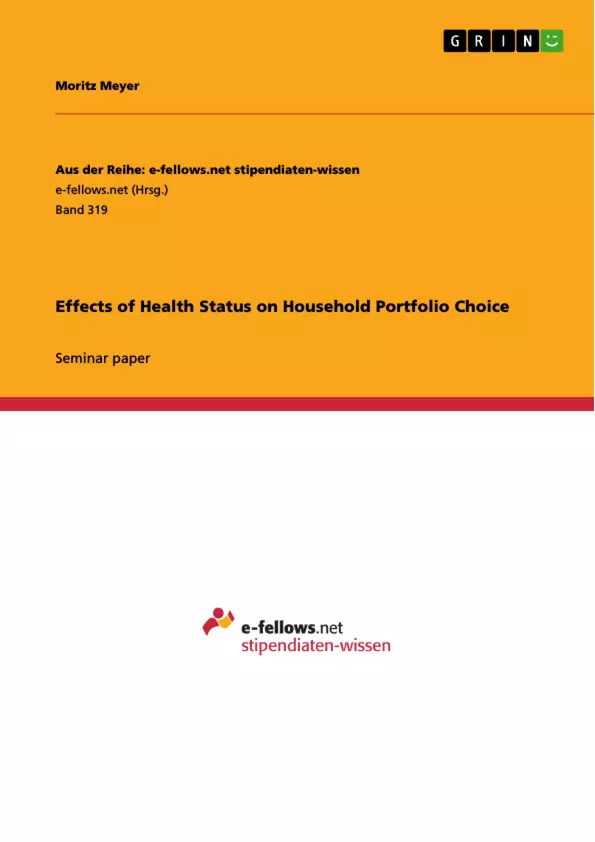The literature on household finance establishes a framework to understand the portfolio choice of individuals. In the light of demographic transition this research proposal focuses on the health status of individuals and uses empirical data to understand how the health status itself and changes in this variable influence the portfolio choice. The key contribution of this research proposal is to characterize the health status of individuals using a newly available and previously unexploited measure. Instead of employing categorical variables, we introduce the subjective life expectancy as measure for the health status. This approach offers several advantages because it captures additional information such as an expectational component about the future health status. Using the self- reported health status this information was not considered although dynamic models clearly point at the influence of expectations on the household portfolio choice. To estimate the impact of
the health status on the portfolio choice of individuals we use the German SAVE dataset provided by the Mannheim Research Institute on the Economics of Aging.
Inhaltsverzeichnis (Table of Contents)
- Introduction and Motivation
- Theoretical Approach and Model
- Data and Estimation Strategy
- Ownership of different types of financial products (extensive margin)
- Marginal holdings of risky assets conditional on ownership (intensive margin)
- Conclusion and Policy Implications
Zielsetzung und Themenschwerpunkte (Objectives and Key Themes)
This research paper aims to investigate the relationship between an individual's health status and their household portfolio choices. Utilizing a newly available measure, subjective life expectancy, the paper aims to expand on existing literature that utilizes categorical variables for health status and incorporate a dynamic aspect to this analysis. The paper uses the German SAVE dataset to test the impact of subjective life expectancy on household portfolio choices.- The impact of health status on household portfolio choice.
- The use of subjective life expectancy as a measure of health status.
- The influence of background risk on household portfolio choice.
- The role of liquidity constraints in household portfolio decisions.
- The implications of demographic transition and aging on household portfolio choices.
Zusammenfassung der Kapitel (Chapter Summaries)
- Introduction and Motivation: This section establishes the motivation for the research, highlighting the growing importance of understanding the link between health status and household portfolio choices in the context of demographic transition. It also discusses the limitations of previous research that relied on categorical variables for health status, emphasizing the need for a more dynamic measure like subjective life expectancy.
- Theoretical Approach and Model: This section delves into the theoretical framework that underpins the research. It explores the role of risk aversion and background risk in influencing household portfolio decisions. It also discusses how health status, as a form of background risk, can impact individuals' risk tolerance and, consequently, their portfolio composition.
- Data and Estimation Strategy: This section details the data source, the German SAVE dataset, and the proposed empirical methodology. It outlines the steps involved in assessing the impact of health status on portfolio choices, including analyzing both the extensive and intensive margins of portfolio decisions.
Schlüsselwörter (Keywords)
The main focus of this research is on understanding the link between household portfolio choice, health status, and the use of subjective life expectancy as a measure for health status. The paper examines how changes in health status influence household portfolio decisions, particularly the allocation of assets between risky and safe investments. The research further explores the role of background risk, liquidity constraints, and the effects of demographic transition on these choices.- Arbeit zitieren
- Moritz Meyer (Autor:in), 2009, Effects of Health Status on Household Portfolio Choice, München, GRIN Verlag, https://www.grin.com/document/182529



